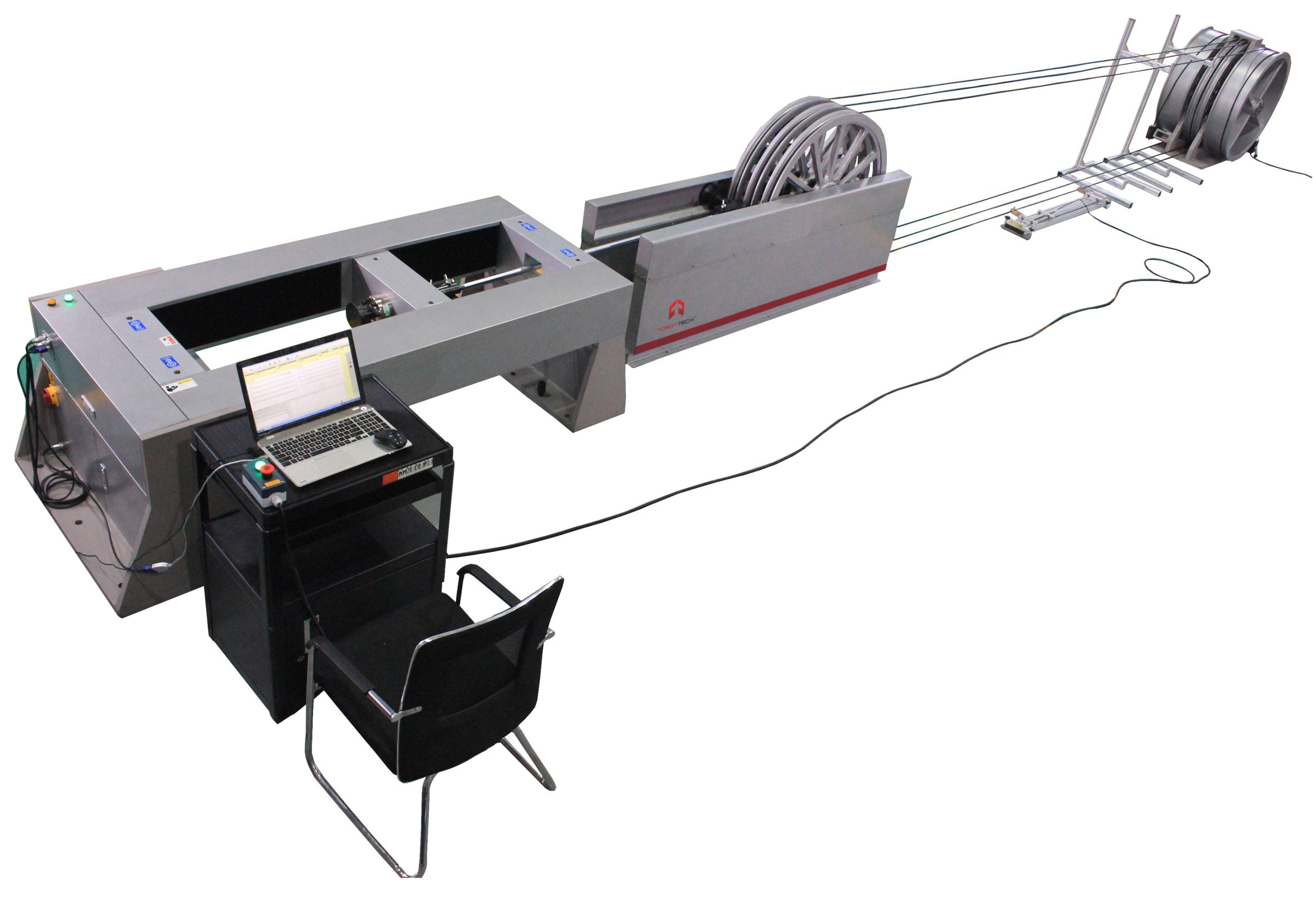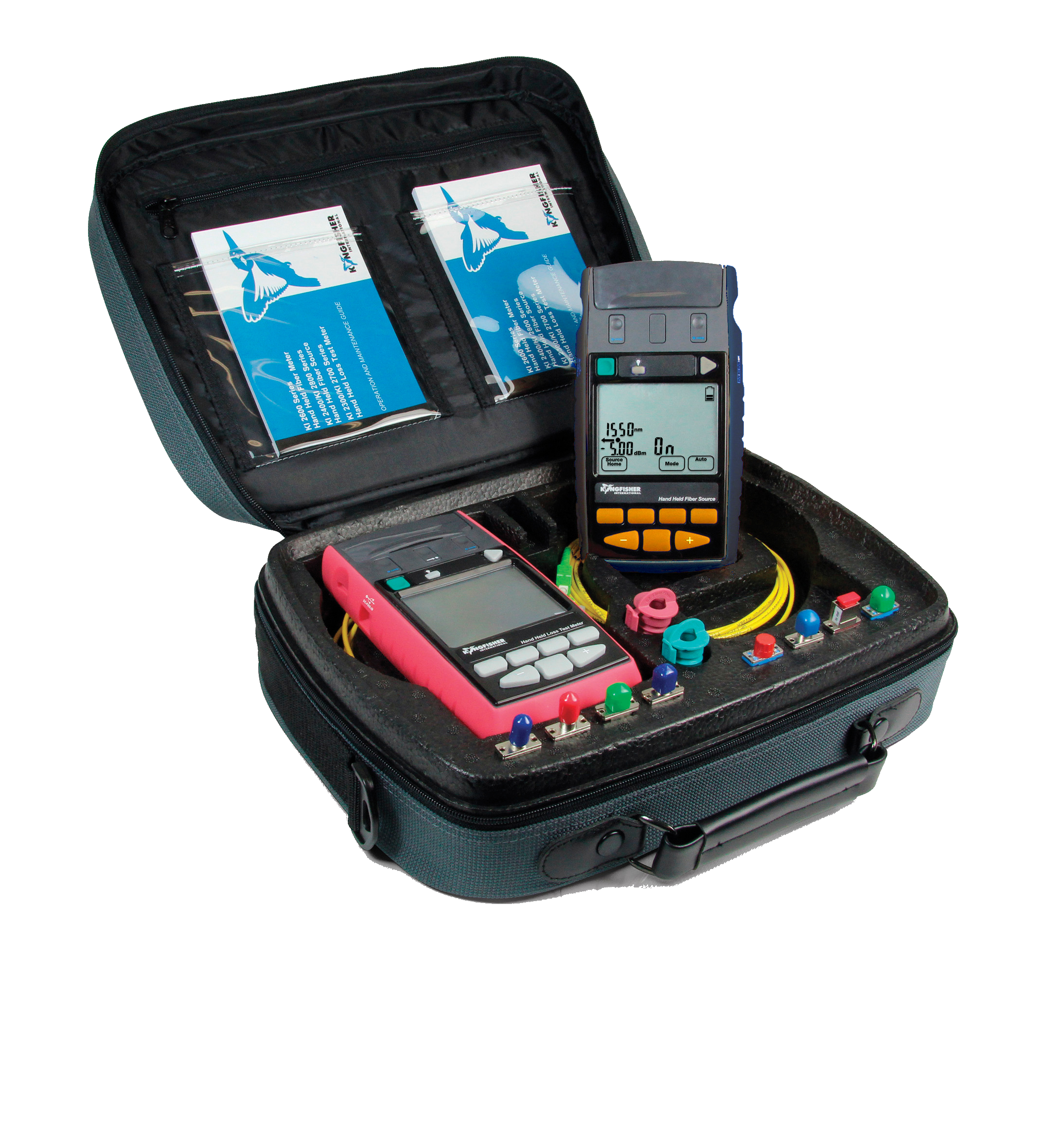Emerging trends in optical fibre diameter analyzer technology for telecom
Wiki Article
Comprehending Just How an Optical Measurement System Enhances Accuracy in Industrial Applications
Optical measurement systems play a crucial function in enhancing accuracy across numerous industrial applications. By leveraging advanced modern technologies such as laser interferometry and 3D imaging sensors, these systems offer high-resolution, non-contact dimensions. This ability lessens the danger of damaging delicate elements while ensuring precision. However, the influence of these systems extends past simple measurements. Discovering their advantages, applications, and future fads exposes an intricate landscape of advancement and challenges that benefits better evaluation.The Essentials of Optical Measurement Systems
Optical measurement systems function as essential tools in numerous industrial applications, supplying precise data collection and evaluation. These systems utilize light as a primary ways of measurement, leveraging optical concepts to assess dimensions, placements, and surface qualities of things. They include components such as lasers, cams, and sensing units, which collaborate to catch high-resolution pictures and data.The innovation allows non-contact measurements, decreasing the threat of damaging sensitive components. Optical measurement systems are flexible, discovering energy in top quality control, assembly verification, and dimensional analysis across various industries. They are especially efficient in atmospheres where typical measurement strategies might fail, such as determining intricate geometries or observing quick activities.
As sectors remain to advance, the assimilation of optical measurement systems will stay vital for making certain precision and performance, eventually improving product quality and functional performance in numerous producing processes.
Key Technologies Behind Optical Measurement
Key modern technologies such as laser interferometry strategies and 3D imaging sensing units play an important role in the effectiveness of optical measurement systems (fibre testing equipment). These technologies make it possible for specific measurements and comprehensive evaluation in numerous industrial applications. Understanding their capabilities is vital for utilizing the full possibility of optical measurement systemsLaser Interferometry Techniques
Various laser interferometry techniques have actually transformed the field of optical measurement, providing extraordinary precision and precision in different industrial applications. These strategies utilize the interference of coherent light waves to determine distance, variation, and surface area irregularities with nanometer-level accuracy. Common techniques consist of Michelson interferometry, which splits a beam and evaluates stage shifts, and Fabry-Pérot interferometry, known for its high resolution in measuring little changes. Furthermore, laser Doppler interferometry uses frequency changes to examine velocity, making it very useful in dynamic dimensions. The adaptability of these methods enables their assimilation into varied production processes, improving top quality control and ensuring adherence to rigid tolerances. Therefore, laser interferometry continues to play a vital duty beforehand industrial measurement requirements.3D Imaging Sensors
Improvements in measurement modern technology have resulted in the advancement of 3D imaging sensing units, which play a substantial duty in optical measurement systems. These sensors record three-dimensional data through various methods such as triangulation, time-of-flight, and structured light. By precisely reconstructing the form and dimensions of items, 3D imaging sensors improve the precision of measurements in industrial applications. They offer real-time feedback, helping with quality assurance and making sure that parts fulfill rigid requirements. In addition, their capability to operate in difficult atmospheres, such as varying lighting conditions, makes them invaluable in making processes. As markets progressively adopt automation, the integration of 3D imaging sensing units right into optical measurement systems is expected to drive more renovations in performance and accuracy.Advantages of Optical Measurement in Industry
Standard measurement approaches have actually long been the requirement in commercial settings, optical measurement systems offer significant benefits that improve precision and performance. These systems use light to capture information, resulting in high-resolution measurements that are frequently unattainable with standard methods. The non-contact nature of optical dimensions minimizes the risk of damaging delicate parts throughout the assessment procedure. In addition, the speed of optical dimensions permits fast information purchase, facilitating prompt decision-making in fast-paced industrial settings.Optical systems are adaptable, capable of gauging different products and shapes without the requirement for considerable recalibration. This flexibility adds to improved process and performance. The automation capacity of optical measurement systems lessens human mistake, ensuring constant top quality control. Overall, the assimilation of optical measurement innovation stands for a dynamic change in the direction of enhanced accuracy and dependability in industrial operations, eventually causing boosted item top quality and operational efficiency.
Applications of Optical Measurement Systems

Optical measurement systems play a crucial role in enhancing manufacturing process optimization by providing accurate data for decision-making. These systems assure quality control assurance through real-time monitoring and evaluation of manufacturing metrics. As sectors significantly embrace these innovations, their effect on effectiveness and product reliability becomes noticeable.
Production Process Optimization
Enhancing manufacturing procedure performance is progressively reliant on the integration of optical measurement systems. These systems provide real-time information on different parameters, allowing suppliers to assess procedures with a high degree of precision. By allowing accurate measurements of measurements, surface qualities, and product homes, optical measurement systems help with the recognition of inefficiencies and traffic jams in assembly line. The immediate responses from these systems equips designers to make educated decisions, leading to maximized machining, assembly, and ending up processes. The capacity to keep track of problems continuously enables for flexible changes, minimizing downtime and waste. As markets go for higher performance and minimized functional costs, optical measurement systems become critical tools for boosting manufacturing process optimization.
High Quality Control Assurance
The integration of optical measurement systems greatly impacts quality control guarantee in industrial settings. These systems give specific and non-destructive measurements, enabling suppliers to identify flaws and discrepancies early in the production procedure. By using advanced imaging strategies, such as laser triangulation and interferometry, optical measurement systems ensure that parts satisfy stringent requirements. This assists in real-time monitoring, lowering waste and reducing the threat of defective products getting to the marketplace. Furthermore, the information gathered can be analyzed to fine-tune manufacturing procedures better, causing continuous enhancement. Eventually, the fostering of optical measurement systems enhances integrity and uniformity in quality assurance, promoting higher self-confidence among stakeholders and consumers alike in the end products provided.Case Researches: Effective Applications
Numerous industries have actually successfully integrated optical measurement systems to boost their operational efficiency and item top quality. In the automotive industry, a famous maker took on a laser triangulation optical measurement system system to check the alignment of car elements. This application considerably lowered setting up mistakes, resulting in improved security and decreased expenses.In the aerospace market, a leading aircraft producer utilized optical metrology for precision measurements of turbine blades, attaining a decrease in making resistances and much better performance criteria.
Likewise, a customer electronic devices business executed optical measurement technology during the manufacturing of mobile phone screens, resulting in enhanced quality assurance and a decline in faulty products.
These study highlight exactly how optical measurement systems not only enhance accuracy yet likewise add to total operational performance, demonstrating their worth across numerous markets. By attending to specific demands, these systems have confirmed to be important tools in contemporary commercial applications.
Difficulties and Limitations of Optical Measurement
While optical measurement systems offer considerable benefits in different commercial applications, they are not without their challenges and restrictions. One significant issue is level of sensitivity to environmental problems, such as temperature changes, moisture, and dust, which can negatively influence measurement precision. Furthermore, optical systems often need specific alignment and calibration, making them prone to human mistake during configuration and operation. An additional limitation is the capacity for disturbance from ambient light, which can misshape dimensions and necessitate complex filtering methods. Moreover, certain materials and surfaces might offer troubles, as reflective or transparent qualities can result in irregular analyses. The price of top quality optical elements and systems can likewise be a barrier for some markets, limiting widespread adoption. Specialized training is commonly needed for workers to efficiently operate and keep these systems, adding to the general intricacy and operational obstacles.Future Patterns in Optical Measurement Technology
As advancements in modern technology remain to form industrial processes, the future of optical measurement systems is positioned for considerable development. Emerging fads suggest a shift in the direction of improved combination of expert system and artificial intelligence, enabling systems to analyze information in real-time, determine patterns, and boost decision-making procedures. Furthermore, the growth of miniaturized sensors and progressed optics is expected to lead to even more compact and functional measurement services, making them accessible for a bigger variety of applications.In addition, the incorporation of 3D imaging and high-resolution abilities will certainly permit for unprecedented accuracy in dimensions, which is essential for markets such as aerospace and vehicle. The promote automation and Industry 4.0 will likewise drive the demand for optical measurement systems that can conveniently user interface with various other technologies. As these trends unfold, optical measurement systems will likely end up being important to attaining better efficiency and precision across various industrial industries.

Regularly Asked Concerns
How Do Optical Measurement Systems Compare to Traditional Measurement Techniques?
Optical measurement systems offer better accuracy and rate compared to standard methods - optical fibre diameter analyser. They reduce human mistake, improve information collection efficiency, and give real-time results, making them progressively preferred in different commercial applications for precise dimensionsWhat Industries Advantage one of the most From Optical Measurement Systems?
Optical measurement systems substantially benefit markets such as aerospace, auto, and electronics. Their capability to give high-precision dimensions improves top quality control, reduces production mistakes, and boosts total efficiency, making them necessary in affordable production environments.Can Optical Measurement Systems Be Personalized for Certain Applications?
Optical measurement systems can indeed be customized for particular applications. By changing criteria such as wavelength, resolution, and calibration strategies, sectors can customize these systems to fulfill unique precision and accuracy requirements efficiently.What Is the Maintenance Demand for Optical Measurement Systems?
The maintenance demands for optical measurement systems normally consist of normal calibration, cleansing of optical elements, and software program updates. Sticking to these methods assurances precision, dependability, and long life of the measurement equipment in various applications.How Do Ecological Variables Influence Optical Measurement Precision?
Environmental aspects, such as temperature level changes, humidity, and dirt, substantially influence optical measurement precision. These elements can distort light courses and interfere with sensor analyses, inevitably jeopardizing the dependability and precision of dimensions in commercial settings.Report this wiki page